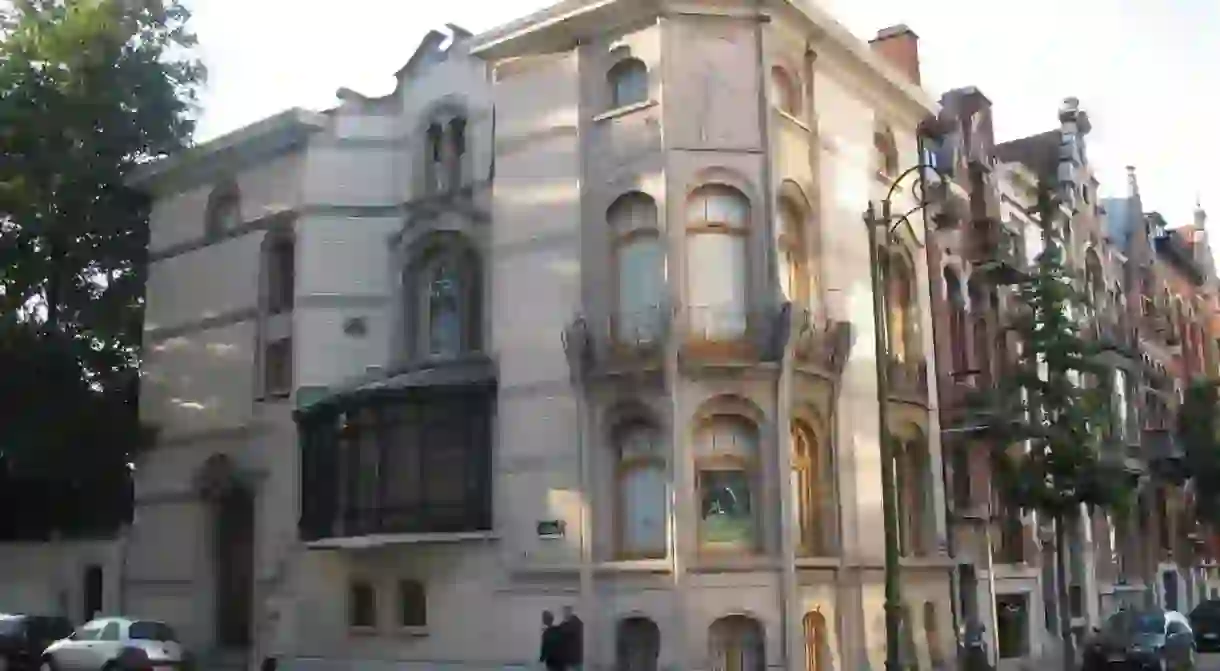A Brief History of Art Nouveau in Belgium

Brussels is the Art Nouveau capital of the world, and one man made it so. A young Victor Horta, tired of the eclectic historical styles his peers kept reaching back for, pioneered an architectural movement that would define the end of the 19th and beginning of the 20th century. Along with compatriots Paul Hankar and Paul Saintenoy, Belgium’s most famous architect has left treasures dotted throughout the heart of Europe, including four townhouses listed as UNESCO World Heritage Sites.
Curved decorative details flowing into the house’s smooth structure, open spaces bathing in the light of an iron-and-glass skylight, a mosaic floor, and exposed metallic structures – the Hôtel Tassel was the ambitious vehicle Victor Horta used to premiere his most innovative ideas. Built between 1893 and 1894 for physicist and chemist Emile Tassel, the remarkable villa was only preceded by Autrique House. While the latter sees Horta already dabbling with new concepts, such as iron beams and other decorative elements, it still floats somewhere in between tradition and innovation. It was the Hôtel Tassel with its unparalleled sense of unity – Horta took it upon himself to design everything, including the door handles – and its airy living spaces that signaled an architectural revolution.

The following year, Horta added what is perhaps the most ambitious work in his Art Nouveau oeuvre, the Hôtel Solvay on the posh Avenue Louise. Client Armand Solvay, the son of world-renowned chemist and industrialist Ernest Solvay, gave the trailblazer complete carte blanche. The result was an exceptionally elegant townhouse – designed with rich materials – that takes great care to add to the lives of its inhabitants. In less than two years, Horta had completed two eye-catching houses in his Art Nouveau style (two of four that would earn a UNESCO label, including his own home and atelier) and started to influence a young Hector Guimard, who would take the inspiration back to Paris with him to dream up the Castel Béranger, the first French residence in the new style.

Meanwhile, Brussels architect Paul Hankar had completed his exceptional personal home in the same neighborhood around the same time as the Hôtel Tassel, putting him shoulder to shoulder with Horta on the frontlines of the movement. The striking decorative façade with sgraffiti would become a calling card he used again for the Maison Ciamberlani (1897). Over a decade later, Paul Cauchie would adopt this nifty technique of self-promotion for one of the last Art Nouveau masterpieces, Maison Cauchie – his home and atelier. Architects such as Paul Saintenoy (the former Old England shops now used for Brussels’ MIM), Jules Brunfaut (Hannon House) and, of course, Victor Horta (more townhouses, a textile department store now housing the Belgian Comic Strip Center) kept adding sublime works to the capital until 1905. The Art Nouveau flame burned bright and fast, and by the time the 20th century turned 10, the fascination had passed, but not before leaving the face of Brussels that much more captivating.













